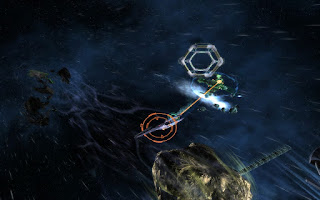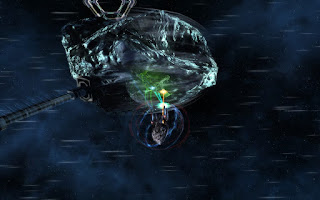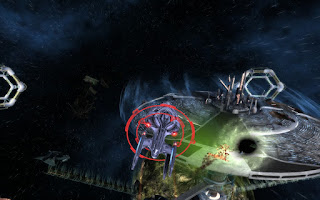First Class:
Greetings, Cadets. I say this while many of you now outrank me, due to battlefield promotions and the like. We also are greeting those joining us via subspace like across several dozen planets, starbases, several hundred starships currently on assignment, as well as our new colleagues joining us remotely from New Talax and Kobali Prime.
The purpose of this class is to gain familiarity with a few of the thousands of humanoid, sentient, and sapient beings so far encountered. We’ll work from the inside out, and please let me know if there are any species you want to know more about sooner. We’ll eventually get to them all, even if we have to involve Temporal Affairs. That was a joke, class; just in case any of you are here from the future, please excuse yourselves or wipe the next hour or so from your integration, and kindly don’t go to the Temporal Affairs Office to report me for muddling the timestream.
Class business: we meet once a week; assignments are collected at that time. If you’re watching via subspace or delayed transmission, your assignments are due 170 hours after the receipt of the transmission of the class here. You should all have my contact information; Please see myself, Commander Lurrie or Lieutenant Commander Polk with any questions or concerns between classes. This class schedule is intended as higher-level Academy credits for those whose terms at the Academy were suspended due to the recent military activity and for those looking to earn additional course credits and commendations while on assignment away from planetside tasks. This is the first of a multi-semester course; We’ll cover principles of humanoid lifeforms in this galaxy, as well as other sentient and sapient life forms who have been encountered by Federation ships or members, and then those whose reports have come secondhand from other species and powers with whom we have current correspondence.
And now, here we cover the breadth and length of what to expect this term.
We’ll cover the definitions of the following terms and how they relate to exploration, interaction, and diplomacy:
Humanoid
Sentient
Sapient
Once these terms are defined, we’ll discuss what is known about ancient humanoid species, the Preservers, and how these ancient races made sure that bipedal, two-armed species with a generally discernable neck and head structure housing a brain became the dominant spacefaring species type.
We’ll begin with the first Federation species – Humans, Vulcans, Andorians, Tellarites – and work towards other major species. Federation species we look forward to learning about include Betazoids, Deltans, Denobulans, Rigellians, Benzites, Bolians, Caitians, Halliians, Ktarians, Risians, Trill, Zakdorn, and several others.
We’ll also look at our newly-former foes, the Klingons, as well, as their allies the Gorn, Orions, Nausicans, Letheans, and others
Other notables species of the quadrant include the Romulans, Remans, Cardassians, Bajorans, Ferengi, and Tzenkethi, after which we’ll discuss various Gamma Quadrant and Delta Quadrant species encountered in the last half-century.
We’ll then delve into species that depart from the humanoid definition and how that changes the equations. Examples of these species include Tholians, Horta, Q, Bzzit Khaht, Changelings, Devidians, Crystalline Entity, and the Undine.
We’ll also compare and contrast various species and how small genetic and morphological changes interact with their home planets, other species, and how inter-species breeding is achieved with help from our colleagues in the sapient genetics section.
For your first assignment, you are to spend around 250 words – or between 200 and 300 for the pedantic among you – describing your own species or background of species. For your second assignment, you are to describe in detail the first experience you had with a member of a species that is not your own. This species should not be from your homeworld or background homeworlds, and should be sapient.
Now to business. Who among us can give me a definition of humanoid?
[a moment of nervous shuffling before a chime]
Let’s see … from the USS Prioritas. Please introduce yourself briefly and then give us your answer.
[A very composed-looking dark-haired humanoid appears. Her ears appear slightly pointed, as those who are part-Vulcan.]
“Lieutenant Alexandra Tarses, Medical, USS Prioritas. Humanoid refers to any physical being in possession of all or most of the following characteristics: A head containing a brain or principal neural structure, neck linking the head to the torso-thoracic area, two upper appendages for manipulation and grasping, usually jointed and having digits at the terminuses of these appendages; two lower limbs principally for mobility often terminating in complex structures for balance and posture.”
Thank you, Lieutenant. The Lieutenant is absolutely correct in her definition, and has obviously studied many different species, is that correct, Lieutenant Tarses?
“It is, sir.”
Now if I may ask you a personal question, Lieutenant. Would you please tell us more about your ancestors? I have my theories, but the truth is always much more interesting.
“I am half-Thanetian on my mother’s side, and three-eighths human and one-eighth Romulan on my father’s.”
Thank you Lieutenant. [projection returns to class title] Now we move to the potentially more complicated questions: sentient vs. sapient.
[Instructor points to two cadets in the lecture hall] Would the indicated cadets please rise, give name, rank, and species background, and then the first please define sentient while the other define sapient?

“Cadet Reschu. Edosian. Sentient refers to being able to sense and perceive the universe around them. This can include but is not limited to vision, smell, taste, hearing, touch, and other forms of vibrational and sensory apparatuses.”

[via translator] “Cadet Mschillikk, Horta. Sapient comes from the root words meaning ‘wise’, that is, to be self-aware and able to objectively question those perceptions.”
I’m very pleased at your preparation. By extrapolation, we can then infer that many species that have sentience without sapience, including much of the live we currently classify as “animal”.
Your third assignment for this week is to write 500-1000 words on sentience, sapience, and provide examples of lifeforms that exhibit only sentience, sentience and sapience, and neither sentience nor sapience.
Further study has been sent to you. Please fill out the form attached, and I’ll see you next week.
Class dismissed.
***
Want more? Go HERE and tell me what you want to hear more about first.
from Priority One Podcast http://ift.tt/1hQ4sxU
Greetings, Captains! You’re listening to a special year-end presentation of Priority One Podcast – your weekly report on all things Star Trek!




































































